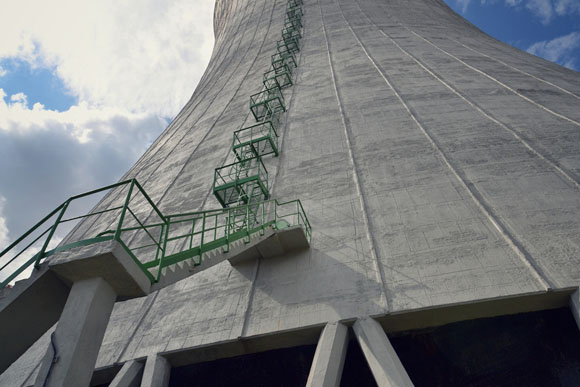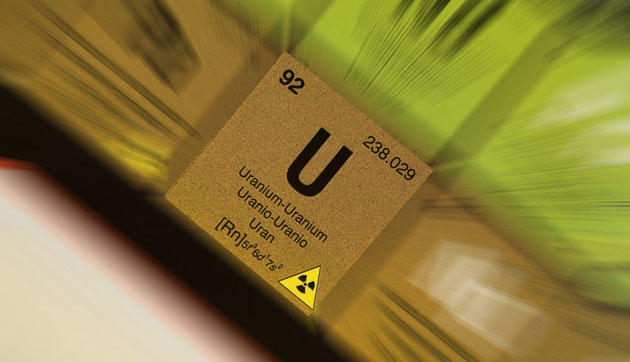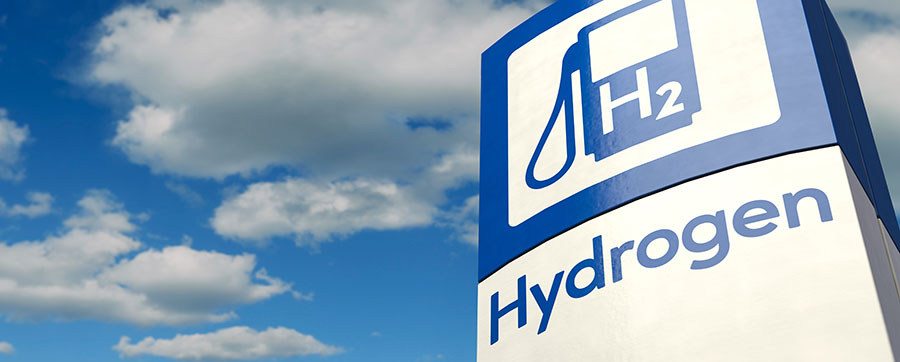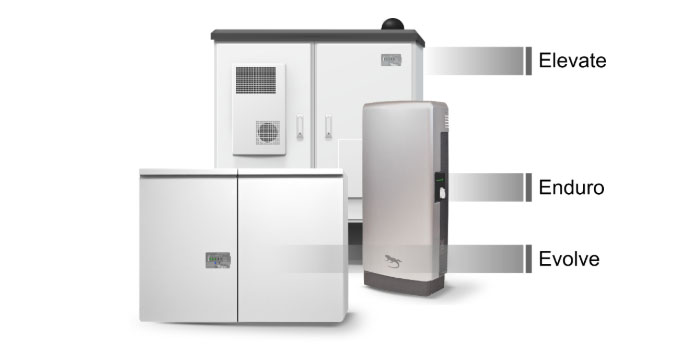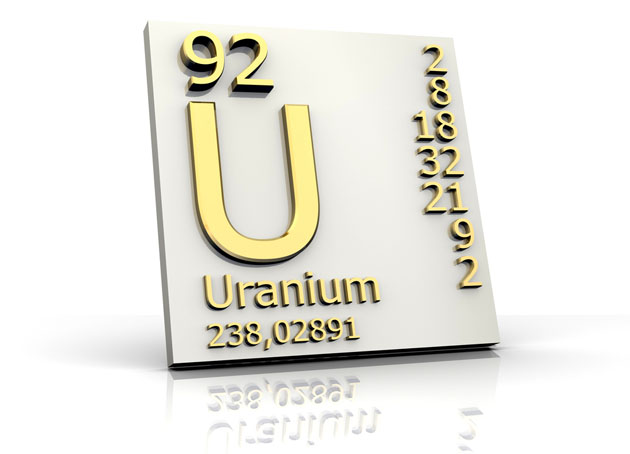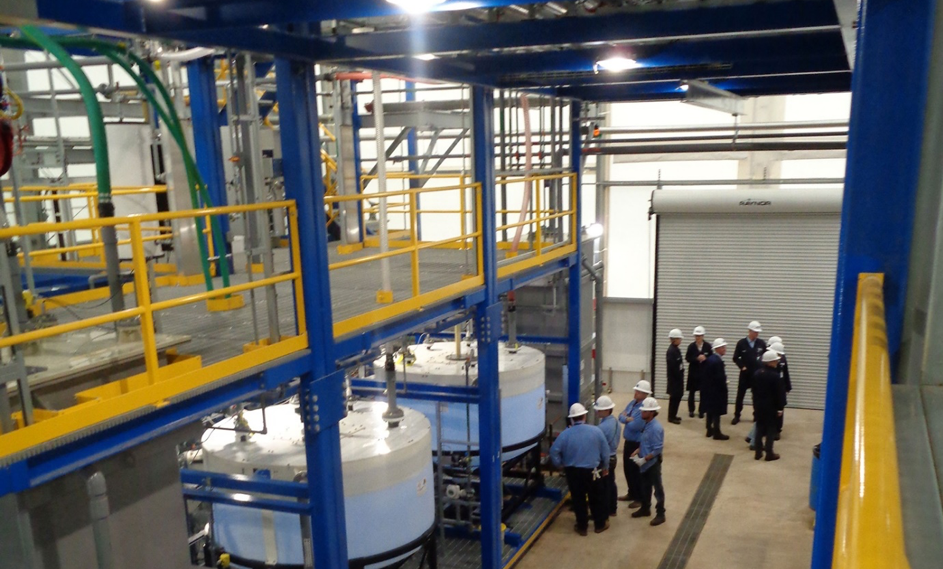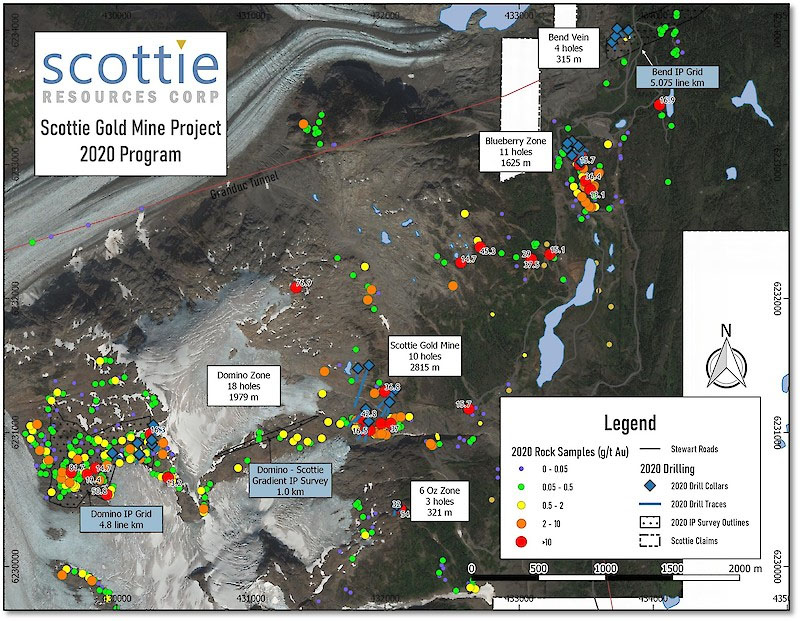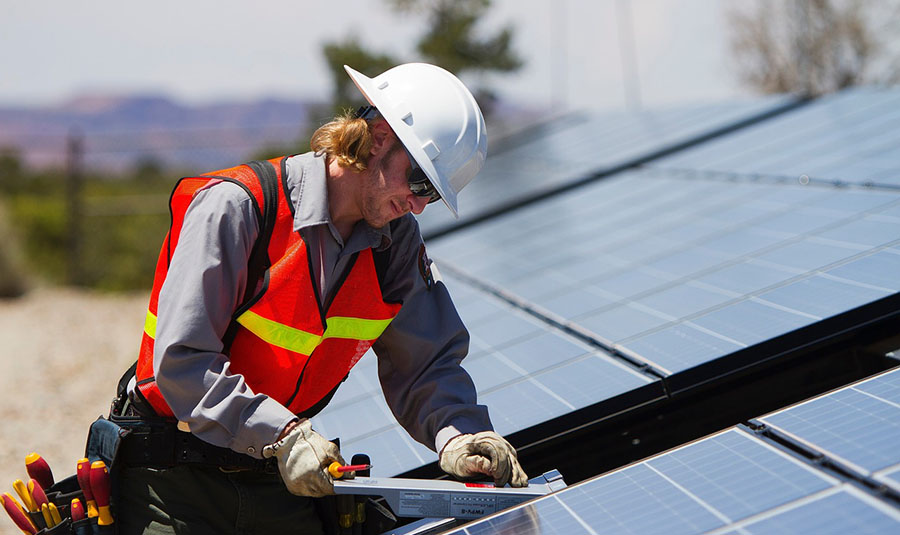The Energy Report: Are existing and projected supplies of lithium sufficient, given the building of the Tesla Motors Inc. (TSLA:NASDAQ) Gigafactory and the other battery manufacturing facilities that have been announced?
Paul Renken: Production capacity will be more than adequate for the factories for one to two years, but we do have concern about the actual availability of the lithium to put into these batteries as the market gets going.
A few press releases were published recently concerning growth or projected growth in lithium battery demand because of the rapid fall of photovoltaic (PV) costs. PV growth will increase demand for wall-mounted power cells for residential and commercial use, particularly in more developed economies like Japan, Germany and Scandinavia. If that happens, we'll need these factories for sure, and more still because we think commercial viability and consumer acceptance is going to pick up rapidly.
TER: Do domestic juniors have an advantage over imported materials based on their logistics and regulations?
PR: It comes down to who can deliver into the supply chains. From mine production, to battery fabrication, to the end manufacturer and distributor of the power cells, the closer you can be to the various components of the overall storable power module in lithium batteries, the greater your advantage.
"Nemaska Lithium Inc. recently received the Canadian patent on a hydrolysis process and has already shown that it can directly produce a lithium hydroxide."
There are going to be some regulatory hurdles to overcome where countries will be protecting their resources. We already see that in places like Argentina and Bolivia on brine-based lithium projects. So those will always be a concern, but as a general matter, the closer the mine is to the battery fabricator, the better.
TER: Should investors be concerned about the difference between lithium carbonate and lithium hydroxide or brine and hard rock?
PR: In those two compounds, the chemical plant will ultimately be configured according to the end need from the actual battery utilizer. The producer will supply a lithium-bearing concentrate one way or the other and it will then go to this chemical plant, which will convert that into the battery-grade carbonate or battery-grade hydroxide.
Right now hydroxide is the more valuable of the two compounds, but that doesn't necessarily mean it will stay that way. There isn't yet a standard as to what the overall chemistry of these batteries will be. There are at least four different chemistries within lithium storage batteries that are vying for consumer acceptance at commercial scale.
As far as whether it should be brine or hard rock, both types of lithium deposits have their benefits and their drawbacks. It's going to come down to who can provide it, or the economics for each situation. The investor will have to judge those circumstances as they develop.
TER: Is success for these companies more dependent on the overall market or on their ability to secure end users and meet specific needs? Will the rising tide raise all boats?
PR: Achieving commercial scale in the storage battery market as a sector will be the tide that raises all boats. We don't have that commercial scale yet in the lithium battery storage market. The chemical side of the business for things like greases has a steady, though rather unexciting, growth. The ability to deliver into that growth is more than adequate at this point.
The battery side of the lithium story is the one that can be well beyond what is currently available in the marketplace. It is going to be very important to see how individual companies can market themselves, both to find their end users and to meet their specific production needs and financing. So when you can see, for instance, a deposit that is close either to current battery manufacturers or to current auto production, that would automatically give some advantages to a company, especially if the deposit is large enough.
TER: What junior companies are you following in lithium now? How are they positioning themselves?
PR: We follow Nemaska Lithium Inc. (NMX:TSX.V; NMKEF:OTCQX) fairly closely because it is the most viable in that part of Quebec after the bankruptcy of RB Energy Inc. (RBI:TSX). Nemaska is now getting the financing commitment secured for its plant on the St. Lawrence Seaway. Financing is a hurdle of about CA$25 million that I think the company is looking forward to clearing in coming weeks and months. It recently received the Canadian patent on a hydrolysis process and has already shown that it can directly produce a lithium hydroxide, so Nemaska Lithium plans to go that route at this time.
We also follow a private company by the name of European Lithium Ltd. that has a rather nice spodumene deposit in southern Austria. That story should be quite good for European auto manufacturers or battery manufacturers producing batteries for the residential and commercial market. We're also looking at an Australian company, Lithium Australia NL (LIT:ASX), which is trying to convert lithium micas into a commercially extractable starting product for lithium as well.
And we follow two others, both clay-style deposits. One's called Western Lithium USA Corp. (WLC:TSX; WLCDF:OTCQX). It's fairly close to the Gigafactory in Nevada. It has been working quite hard to commercialize the extraction of lithium from clay. The other one is Bacanora Minerals Ltd. (BCN:TSX.V). It has a sizeable lithium clay deposit in northern Mexico. It has a really nice-size deposit and it should have a logistical advantage to deliver to battery manufacturers for the Mexican automobile assembly plants. Bacanora Minerals also has a non-binding memorandum of understanding with Tesla for future offtakes. So we'll see whether that comes to fruition.
"Fission Uranium Corp. has probably the highest-grade unmined uranium deposit in the world that isn't controlled by a major uranium producer."
We also follow Orocobre Ltd. (ORL:TSX; ORE:ASX). The one thing we watch closely about Orocobre is the speed of its ramp-up to production. It appears it's about three months behind schedule as far as the production of saleable product is concerned. The company is dealing with extraction issues in the plant, and it has forecast that it should make breakeven production levels by February of next year.
TER: The biggest news in the junior uranium space is the deal between Fission Uranium Corp. (FCU:TSX) and Denison Mines Corp. (DML:TSX; DNN:NYSE.MKT) that the Fission shareholders quashed. Where does that leave Fission Uranium strategically?
PR: It leaves Fission Uranium essentially back to the position it was in before the Denison Mines deal, and that is with probably the highest-grade unmined uranium deposit in the world that isn't controlled by a major uranium producer. I'm not sure that Fission Uranium is really concerned about that one way or the other.
The uranium market is having some constructive news and price response in yellowcake since the beginning of the year. China's president, Xi Jinping, announced that China would end up with a one-third portion of the new Hinkley Point nuclear power plant in the U.K., and that's a $20 billion investment. That kind of news certainly is supportive to the outlook for uranium and the future for nuclear power. I believe we also had a second plant in Japan go into warm-up mode just recently. Those kinds of things are putting some breath back into the market for uranium.
TER: What would you expect from Denison Mines? Another offer, another deal?
PR: I would expect Denison Mines to keep a close eye on it and see how the market proceeds. It is limited as to the time that it has to let go by before it can make another formalized bid. We'll see what develops. In the meantime, it gives other firms that might want to get a high-grade deposit for the long term a chance to look at Fission Uranium. Just keep an eye on that space.
TER: Do you know of any other suitors for Fission? Any scuttlebutt?
PR: We haven't had any rumors that would suggest who it might be one way or the other, but my feeling is that someone like AREVA SA (AREVA:EPA), which was burned rather badly on an acquisition about 10 years ago, was getting some decent-size deposits under its belt and might want in because it has significant current exposure to a more risky political jurisdiction. AREVA might want to take a run at it.
TER: What about the rest of the junior uranium market? How does it look as far as getting into production with the most economic project by the time prices turn up again?
PR: One to follow on the exploration front is NexGen Energy Ltd. (NXE:TSX.V; NXGEF:OTCQX). It's important for a couple of reasons. First, it's high grade; second, it's on the same structural trend as Fission Uranium's deposit at Patterson Lake, and it's likely both of their resources are part of the same system because they're occupying the same structures and stratigraphic sequence. NexGen Energy is just off to the northeast of Fission's Patterson Lake deposits. The bigger the total resource gets in those two deposits, the more likely there's going to be a plant built in the vicinity to treat those ores to concentrates rather than send them some distance off to the eastern side of the region, where the existing plants are.
"NexGen Energy Ltd. is one to follow on the exploration front."
Another one I'd like to mention is the merger between Uranium Resources Inc. (URRE:NASDAQ), and Anatolia Energy Corp. (AEK:ASX). That has everything to do with the deposit called Temrezli in Turkey, a nice in-situ leach situation that Uranium Resources gets a piece of. Another one we watch is Berkeley Energy Ltd. (BKY:ASX; BKY:AIM). It has the Salamanca uranium deposit in Spain, which ought to be a nice, low-cost, open-pit operation.
TER: Now that Berkeley Energy has secured all the major permits it requires in the Salamanca project, what do you anticipate its strategy will be?
PR: We had Berkeley Energy in to visit with us recently, and its managers made it quite clear that they intended to be producers on this project.
TER: Is that a good move?
PR: I think it's just fine. It would be the primary uranium producer coming on in the near term for the European market and with France next door to Spain, that's the obvious place where that yellowcake would end up going, I think.
TER: You mentioned that NexGen's resource was on the same trend as Fission's. Are both companies following a similar strategy?
PR: Right now, both Fission's and NexGen's strategies are the same, essentially to further define more resources to determine the scale of mineralization on the properties. So beyond that, I think the managements are holding their cards close to the chest. Anything else is just pure speculation.
TER: To close, how would you advise investors going into each of those markets—lithium and uranium?
PR: Both of these commodities are relative bright spots in an otherwise poor commodity demand environment for natural resources. Their fundamentals are much more favorable than other materials, at least that we can see in the near term. My advice to investors is that there's no reason to pay for uncertainty, which means that your same investor dollar is going to buy projects at very low prices that are much further along the development curve for both permitting and finance. So why not buy when things are quite inexpensive as far as risk is concerned? That's what the institutional money is looking to do. That's what the private equity boys are looking to do—use their cash to buy quality things on the cheap. Also, concentrate on those deposits that are definitely going to be high-grade and in the very lowest ends of the cost curves of whatever the ultimate longer-term pricing outlook is. No reason to chase after companies that are showing average grades that don't impress.
TER: Paul, thank you very much for your thoughts today.
PR: You're more than welcome.
Paul Renken has a broad range of experience in various aspects of the mining and minerals business. He began his career as a geologist for Canadian junior resource companies in the Western United States. Owning a stake in a private consulting firm as vice president of exploration, Renken searched for various base metals, precious metals and industrial minerals. In the U.K., he worked in the equity market media outlets of Digitallook and Hemscott before joining VSA Capital Ltd. as mining analyst in 2006.
Read what other experts are saying about:
DISCLOSURE:
1) Tom Armistead conducted this interview for Streetwise Reports LLC, publisher of The Gold Report, The Energy Report and The Life Sciences Report, and provides services to Streetwise Reports as an independent contractor. He owns, or his family owns, shares of the following companies mentioned in this interview: None.
2) The following companies mentioned in the interview are sponsors of Streetwise Reports: NexGen Energy Ltd., Nemaska Lithium Inc. and Fission Uranium Corp. The companies mentioned in this interview were not involved in any aspect of the interview preparation or post-interview editing so the expert could speak independently about the sector. Streetwise Reports does not accept stock in exchange for its services.
3) Paul Renken: I own, or my family owns, shares of the following companies mentioned in this interview: None. I personally am, or my family is, paid by the following companies mentioned in this interview: None. My company has a financial relationship with the following companies mentioned in this interview: European Lithium Ltd. I was not paid by Streetwise Reports for participating in this interview. Comments and opinions expressed are my own comments and opinions. I determined and had final say over which companies would be included in the interview based on my research, understanding of the sector and interview theme. I had the opportunity to review the interview for accuracy as of the date of the interview and am responsible for the content of the interview.
4) Interviews are edited for clarity. Streetwise Reports does not make editorial comments or change experts' statements without their consent.
5) The interview does not constitute investment advice. Each reader is encouraged to consult with his or her individual financial professional and any action a reader takes as a result of information presented here is his or her own responsibility. By opening this page, each reader accepts and agrees to Streetwise Reports' terms of use and full legal disclaimer.
From time to time, Streetwise Reports LLC and its directors, officers, employees or members of their families, as well as persons interviewed for articles and interviews on the site, may have a long or short position in securities mentioned. Directors, officers, employees or members of their families are prohibited from making purchases and/or sales of those securities in the open market or otherwise during the up-to-four-week interval from the time of the interview until after it publishes.




